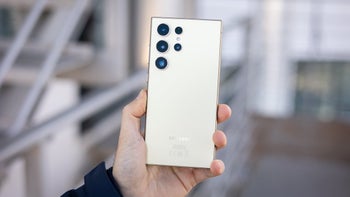Nvidia’s Tegra K1 might draw a shocking amount of power

Nvidia unveiled its new Tegra K1 system-on-a-chip with a lot of buzz at the Consumer Electronics Show 2014, capturing headlines with its 192 shader cores and with some impressive demos, but one big question remained largely unanswered: what is the real power draw of the K1?
Nvidia claimed its numbers for the K1 are on par with the Apple A7, but experts remained skeptical. If you, too, had some doubts about the power efficiency of the Tegra K1, these latest revelations would only further fuel them. SemiAccurate looked back at earlier demonstrations of the new chipset and spotted some interesting details from Nvidia’s CES demo. Namely, the fact that the gigantic system demoed at CES is not just large in size, but also - actively cooled.
This disturbing fact alone is enough of a red flag, but SemiAccurate also gleaned at the power brick for the Tegra K1 demo box, and it reveals a truly shocking power draw. With a voltage of 12 volts and 5 amps of electric current, we arrive at a total peak power draw of 60 watts for the entire demo box! Truth be told, the actual power draw of the system is not likely to reach that peak - it was probably running at around 35 watts to 40 watts, according to SemiAccurate’s rough estimates. This is the power draw for the whole system, including all other on-board components (and the fan), but the Tegra K1 is obviously one component drawing a sizable amount of that power. It’s also no coincidence that it’s the only component with a heatsink on it.
Nvidia itself has said that it'll get the new chip into sub-2watt territory, but - if all these new numbers prove true - the consequences would be that the company still has some big challenges to overcome. Passively cooled mobile devices like smartphones and tablets draw a couple of watts (even the largest and bulkiest of tablets come with power draw limitations of around 4 watts at most), so the aforementioned huge numbers look suspicious at least. It is also possible that the Tegra K1 for devices like tablets will run at much lower clock speeds than the developer boxes on display.
Nvidia claimed its numbers for the K1 are on par with the Apple A7, but experts remained skeptical. If you, too, had some doubts about the power efficiency of the Tegra K1, these latest revelations would only further fuel them. SemiAccurate looked back at earlier demonstrations of the new chipset and spotted some interesting details from Nvidia’s CES demo. Namely, the fact that the gigantic system demoed at CES is not just large in size, but also - actively cooled.
This huge power consumption of the Tegra K1 is definitely shocking - after all, we have seen the perfectly regularly sized, 7-inch Nvidia Tegra K1 reference tablets running without any huge overheating issues, so we know that at least that is possible. We don't know whether there were any differences between the clock speeds of the Tegra K1 developer box examined by SemiAccurate and the K1 reference tablets, but still, with all this new information, we’d take a slightly more conservative stand on the Tegra K1.
Right below, you'd see images of the Tegra K1 dev board and its power brick. What do you make of all these numbers?
source: SemiAccurate
source: SemiAccurate













Things that are NOT allowed: